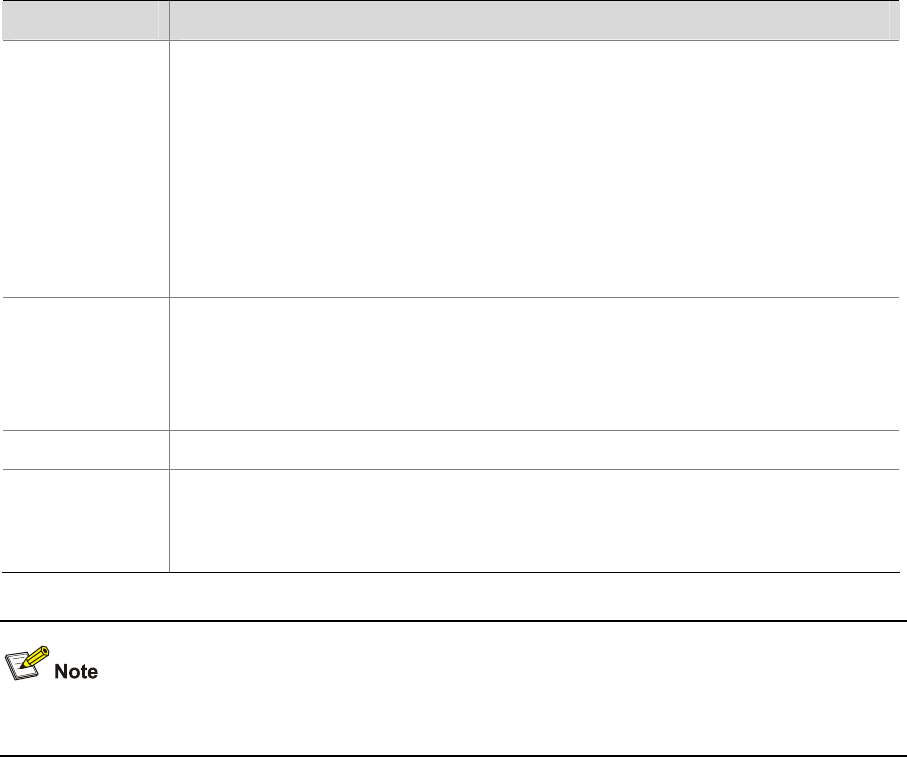
1-2
Table 1-1 Consistency considerations for ports in an aggregation
Category Considerations
STP
State of port-level STP (enabled or disabled)
Attribute of the link (point-to-point or otherwise) connected to the port
Port path cost
STP priority
STP packet format
Loop protection
Root protection
Port type (whether the port is an edge port)
QoS
Rate limiting
Priority marking
802.1p priority
Traffic redirecting
Link type Link type of the ports (trunk, hybrid, or access)
VLAN-VPN
State of VLAN-VPN (enabled or disabled)
TPID on the ports
State of inner-to-outer tag priority replication (enabled or disabled)
The Switch 4500 family support cross-device link aggregation if XRN fabric is enabled.
Link Aggregation Classification
Depending on different aggregation modes, the following three types of link aggregation exist:
z Manual aggregation
z Static LACP aggregation
z Dynamic LACP aggregation
Manual Aggregation Group
Introduction to manual aggregation group
A manual aggregation group is manually created. All its member ports are manually added and can be
manually removed (it inhibits the system from automatically adding/removing ports to/from it). Each
manual aggregation group must contain at least one port. When a manual aggregation group contains
only one port, you cannot remove the port unless you remove the whole aggregation group.
LACP is disabled on the member ports of manual aggregation groups, and you cannot enable LACP on
ports in a manual aggregation group.
Port status in manual aggregation group
A port in a manual aggregation group can be in one of the two states: selected or unselected. In a
manual aggregation group, only the selected ports can forward user service packets.


















